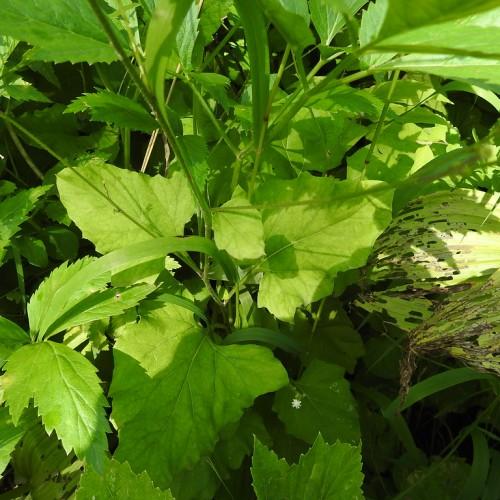
Trailplant
Adenocaulon bicolor
Also Known As - Pathfinder,American Trail PlantWatering:
Minimal
Hardiness Zone:
Flowers:
Flowers
Sun:
Shade
Soil:
Loam, Humus Enriched
Leaf:
Yes
Growth Rate:
Low
Drought Tolerant:
Yes
Salt Tolerant:
Yes
Care Level:
Medium
watering
Trailplant (Adenocaulon bicolor) should be watered every 4-5 days when the soil is dry and the plant begins to look droopy. It does not need a large amount of water, so be careful not to over-water this species. Try to keep the soil lightly moist but not soggy. Water should be applied from the top of the soil to the bottom at the stem of the plant using 1-3 tablespoons of water for an average sized pot. The frequency of watering will depend on many factors like the size of the pot, the weather, and the type of potting mix.
sunlight
Trailplant (Adenocaulon bicolor) grows best in full sun, although some shade is tolerated. It is native to western North America and can be found in California, Oregon, Washington, Idaho, Nevada, Wyoming, and Utah. It typically grows in dry, rocky areas at an elevation of 6100-7900 ft (1860-2400 m). In terms of how much sun, Trailplant should receive at least 6 to 8 hours of direct sunlight each day and should be shaded during the hottest parts of the day in summer. For optimal growth, Trailplant should be provided with full sun all year round. During the spring and summer months, Trailplant should be placed in a sunny area with plenty of direct sunlight. In the fall and winter months, it should still be placed in a sunny area, but with some protection from the cold and wind.
pruning
Trailplant (Adenocaulon bicolor) should be pruned in early spring, just as new shoots appear and as soon as the plant blooms in late summer. Pruning should be done lightly and at ground level. It's best to take off no more than 1 third of the foliage, otherwise the plant may not be able to survive. Doing so will encourage the new shoots to grow fuller and bushier. Pruning can also help keep the plant looking neat and tidy. Additionally, removing faded and dead flowers helps to reduce the risk of spreading fungal diseases.
